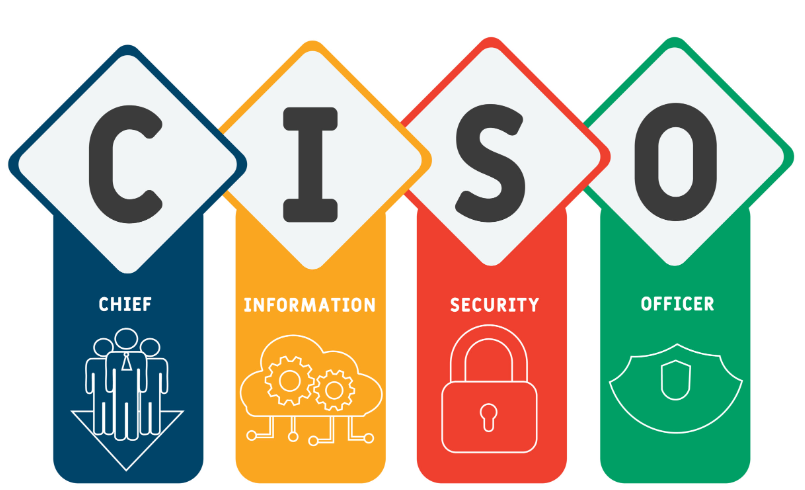What does it take to be a world-class CISO and what solutions can you Implement today if you are a CISO or want to be one in the future?
Here is some advice for you.
The CISO Roadmap focuses on using business drivers to guide information security activities and consider security processes as part of the organization’s security management processes. The overall objective of this roadmap is to;
- Establish direction toward the Company’s information security in line with the business and applicable regulatory requirements.
- Elevate the information security maturity across the company.
- Ensure an effective information security management framework within the company with clear roles and responsibilities and formalize information security governance.
- Prescribe mandatory controls to enforce information security management to protect and maintain the confidentiality, integrity, and availability of assets.
- Provide a framework for technology-related security standards and their associated policies.
- Enable and sustain a secure ecosystem for the business units, customers, and partners to operate and grow.
- Ensure that information stored and processed on the Company’s behalf by a Third Party is appropriately protected.
- Ensure that the security objectives and business objectives of the Company are achieved through efficient management of information security Management in the Company.
A solid information security program is an essential component of running a business in the digital age—a time when the number of data breaches and security incidents is increasing exponentially. Without a security program, you leave the Company, customers, and data at risk. Let’s explore the components of an information security program, and walk through a step-by-step guide on how to implement your program.
- Build Information Security Team: Before you begin this journey, the first step in information security is to decide who needs a seat at the table. One side of the table holds the executive team, made up of senior-level associates responsible for crafting the mission and goals of the security program, setting security policies, risk limitations, and more. On the other side of the table sits the group of individuals responsible for daily security operations. As a whole, this group designs and builds the framework of the security program.
- Explore the Inventory and Investments: The security team’s first job is to understand which assets exist, and where those assets are located, ensure the assets are tracked, and secure them properly. In other words, it’s time to conduct an inventory of everything that could contain sensitive data, from hardware and devices to applications (both internally and third-party developed) to databases, shared folders, and more. And then, we have to build a budget and proper security investments.
- Conduct an Information Security Assessment: Security Posture assessment does not exist uniformly throughout an organization. Every business has critical processes and assets essential to its operations. The goal of conducting a security assessment is to identify critical processes and assets and assess the contextual risk of each. This map of contextual risk is used in subsequent stages of the cyber security program development process to allocate resources and develop appropriate security policies and controls that ensure operational resilience.
- Select Framework and Develop Security Strategy: A cyber security program is a continuous and iterative process. A cyber security strategy is a formalized plan or roadmap that establishes a baseline for a company’s security program and plans activities over the next 2-3 years. After an organization has conducted a risk assessment, it can select the most appropriate cyber security framework to mitigate cyber risk in concordance with the findings of the risk assessment. The cyber security framework will serve as an advisory for best practices during the design and implementation of policies and controls.
Common cyber security standards are: ISO-27001 / ISO-27002, NIST Cybersecurity Framework (CSF), Information Security Forum (ISF) - Create Security Policies and Controls: Policies and controls help to define the standard operating procedures that will ultimately ensure IT security best practices of the selected cyber security framework are applied and remain active. The most fundamental way to describe the key function of IT security policies and controls is to protect the:
– Confidentiality – Data cannot be accessed by unauthorized individuals or systems.
– Integrity – Data cannot be modified by unauthorized individuals or systems.
– Availability – Systems that are always online can be accessed when they are needed, of data-at-rest.
Protecting these critical elements should include administrative, technical, and physical policies and controls, which are designed to detect, prevent, and recover from all incidents that could otherwise negatively impact the organization’s IT infrastructure and business operations.
Don’t Forget:
Security starts at the beginning of everything we do. It is not just an IT task and needs to be designed and executed End 2 End. You have to follow up on The Four Principles below.
- Security by Design E2E, Business and IT*: Secure design of business processes, automation in IT, and by encouraging a culture of discipline, ownership, and craftsmanship in BU’s and IT.
- Executing a Control Framework based upon best practices (like ISF, NIST, ISO) Information Security is part of the corporate governance framework and assures us of the effectiveness of controls (Test of Effectiveness)
- Security in -the mindset of- the first line of defense, executed and budgeted risk and security in the Business Units, strengthen the Business Units to execute their security plan.
- Functional reporting lines for monitoring and assurance reporting by the CISO and the Business Managers are in place.


Leave a Reply